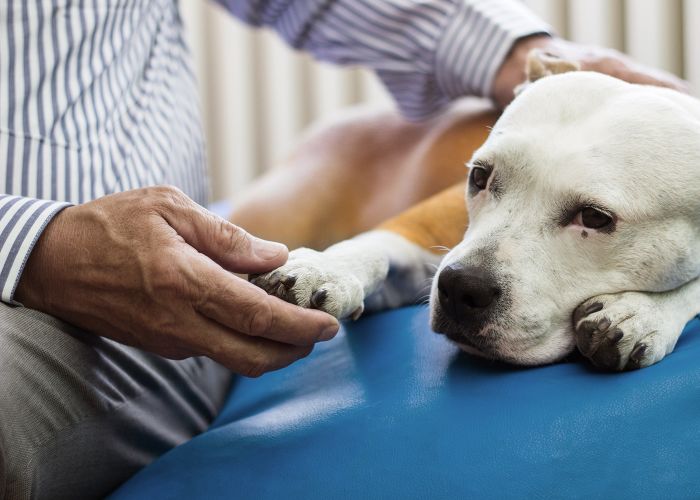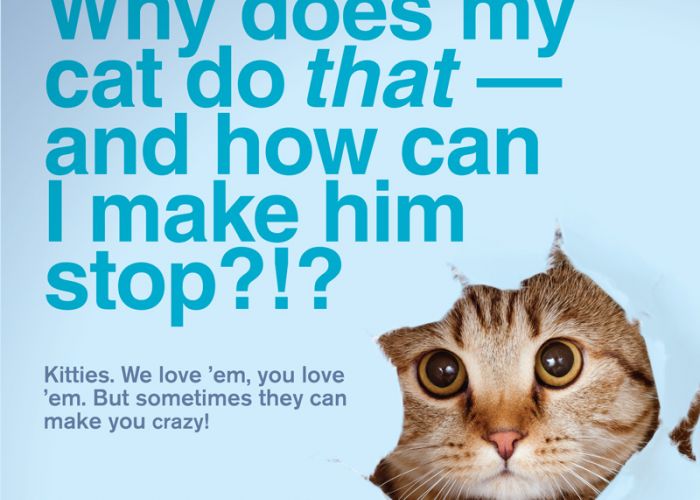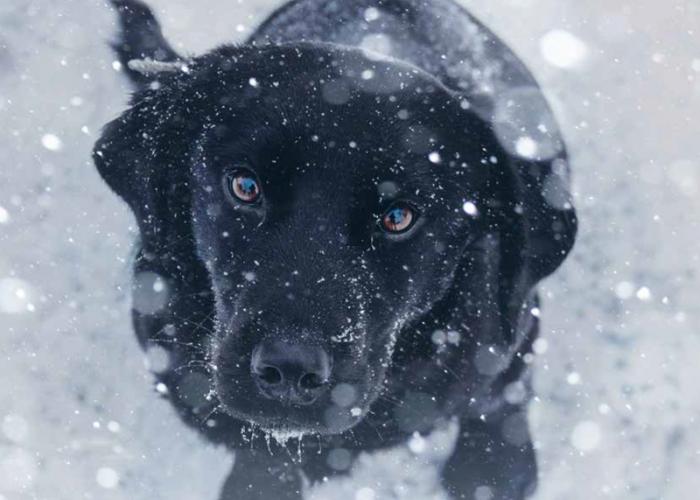Humans of Animal Advocacy: Sara White, DVM
For nearly two decades, the founder of Spay ASAP has brought high-quality, high-volume spay/neuter services to Vermont and New Hampshire communities
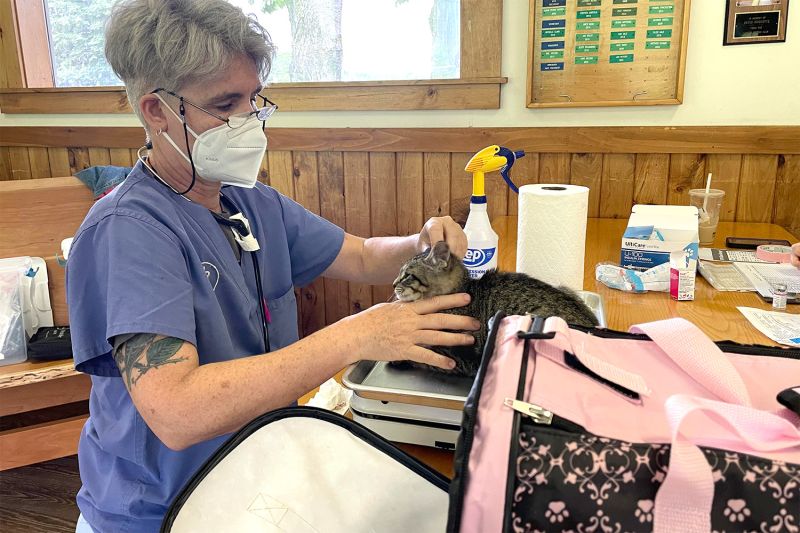
When Sara White was an undergraduate student, she thought she might want to become a field researcher studying wildlife. “Then I learned that the people who do that spend all their time writing grants so they can hire college students to go out and do the fun stuff,” she says. “I wanted to be the one who gets to do the fun stuff!” White decided to go to veterinary school instead, entering a field that offered plenty of hands-on “fun stuff.”
It didn’t take White long to find her niche in the field: offering high-quality, high-volume spay/neuter clinics in Vermont and New Hampshire. Through Spay ASAP, which she founded in 2006, White has performed more than 65,000 surgeries on cats, dogs and rabbits.
In her MASH-style clinics, host organizations secure the venue—which could be an animal shelter, a church basement, a fire station or other suitable space—and schedule appointments, coordinate volunteers, and provide basic supplies such as tables, chairs and pet crates. White brings a vet tech and her Kia Soul, packed with anesthesia machines, medications, surgical packs and other medical gear.
This lean business model enables White to pay herself and her vet techs competitive wages while charging the shelters that host the clinics a low price. It also allows her to focus on the work she loves and have a big impact on animals and people.
“In my opinion, Dr. White is the reason New England got ahead on spay/neuter back in the day,” says Lindsay Hamrick, who started her animal welfare career working in New Hampshire shelters and now serves as director of shelter outreach and engagement at the Humane Society of the United States.
In this edited interview, White shares what drew her to this corner of veterinary medicine, the benefits and challenges of MASH-style clinics, and tips for getting started.
How did you come to specialize in spay/neuter?
After graduation I worked in a mixed-animal practice, but I burnt out pretty quickly. I did really like surgery, and I liked working with clinic staff and regular clients. But I’m a shy person, so meeting new clients and doing exams were really stressful.
I started volunteering for a shelter in New Hampshire, which quickly turned into a part-time job. Then they built a surgery suite. I was really excited about that, and they were excited about getting their animals into surgery on-site. But this being the early 2000s, there was a lot of concern about shelters and nonprofits competing with general practitioners. I really wanted to at least be doing spay/neuter for community cats.
Around that time, I met Dr. Leslie Appel, who had founded Shelter Outreach Services, a MASH-style spay/neuter clinic in Ithaca, New York. I went to visit Leslie and spent a week traveling with her vets and talking with her. She gave me all her organizational documents to help me start Spay ASAP.
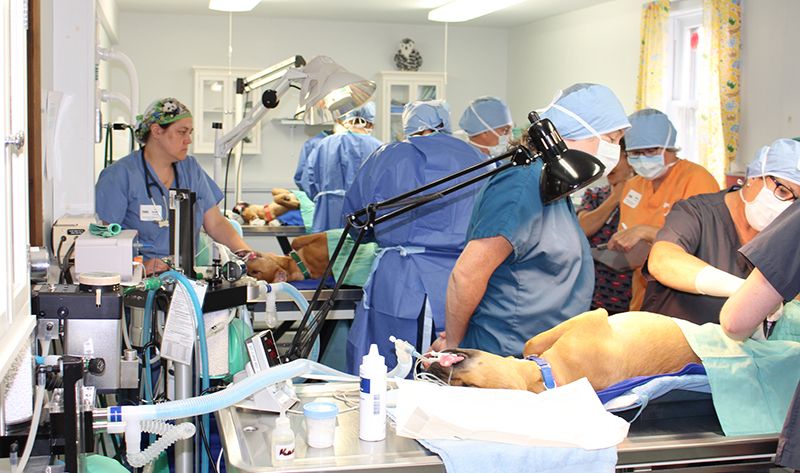
What are the benefits of a MASH-style model?
When I began Spay ASAP, I knew I wanted to start something sooner rather than later. For stationary clinics, you might be on month six of your nine-month setup process when you’re hiring a vet. With the MASH model, I have very little overhead, which is why I could start it so quickly. The model is also flexible. I had part-time work at a small animal clinic when I was ramping up. I didn’t need to go from zero to full-time all at once.
I have myself and one vet tech at each clinic. The rest of the people who work the clinic are staff or volunteers of the host organization. That makes it much easier because I’m only managing myself and three part-time techs.
It’s also very effective because I am in a rural space. The shelters in this region are far enough apart that a stationary clinic wouldn’t necessarily draw people from the regions that I serve.
Finally, I’m not distracted by all the other needs in an animal shelter or all the many worthwhile things that can distract you from what you’ve decided is your mission. I can get distracted on my own time, but my business time—my Spay ASAP time—is spay/neuter.
What are some of the challenges?
Where I’ve seen other clinics have a hard time sustaining MASH is when they don’t find those local partners or if those partners don’t want to do the work involved in hosting a clinic. I was fortunate that in the beginning the shelters were quite willing to cooperate with the parameters I set, and then once I had become established, I could just say, “This is the way we do things.” It’s sort of like dinner at Mom’s house. Your options are take it or leave it. At this point, I’m working with seven shelters. It’s a good group, and they’ve all worked with me long term.
Another potential challenge is that you’re not necessarily in the same geographic location as clients. You’ve got to figure out how you’re going to deal with complications and follow-ups. In my organization’s case, the clients go home with my cell phone number so that I can triage. And most of the calls are things we can figure out through speaking and texting photos.
If an animal needs to see a veterinarian because of something related to the surgery, it’s our policy to pay for that visit at a local vet or emergency clinic. Fortunately, it’s not very common that we would need to do something like that, but it’s important to have a plan for how to handle it.
If someone is thinking about starting a similar practice, what are some considerations to keep in mind?
First, make sure that it’s legal in your jurisdiction. Some states require veterinary practices to be in a place with a premise permit. If the facility where you’ll be doing surgeries needs to get a premise permit, you probably can’t do MASH there.
But you can do some things that are MASH-like. For example, in Florida, where you need a premise permit, some people get a small mobile unit and have a permit for it. They use a shelter location as the animal housing part. So your unit serves as the surgery suite, and all the nonmedical parts happen outside your vehicle.
Then I think really figuring out, do you have organizations that you can work with? Think of who those local organizations are and whether they have the skills and bandwidth to organize a clinic.
Even if the director of a shelter doesn’t have it in their skill set to do that detailed, clerical, organization piece, they might have a staff member who is interested in it. That person is going to organize a whole day of animals and volunteers. They’ll need to follow my instructions about how many animals to book and more. It’s important to come up with expectations that are spelled out clearly on both sides.
In addition to your direct care work, you’ve edited a textbook on spay/neuter, taught HQHVSN techniques to other veterinarians and technicians, and engaged in independent research. How do teaching and sharing knowledge fit into your career?
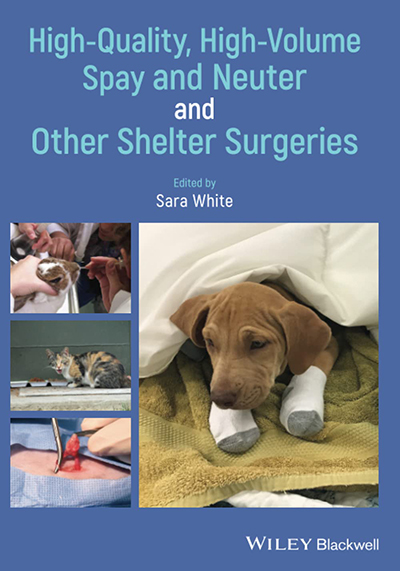
A foundational thing for me is trying to give spay/neuter practitioners the information, support and connections they need. I’ve been involved in many research projects over the years. Not just on things like the efficacy of spay/neuter or who’s coming to spay/neuter clinics, but also trying to answer questions vets are asking. For example, the prevention of fetal suffering during spay/neuter of pregnant animals is a huge issue. In a late-term spay, what is the appropriate thing to do? There were lots of opinions, but also deeply held beliefs and deeply felt anxiety about it. I realized people really needed somebody to dive into the research, so I did that.
You’ve also written about ergonomics as it relates to veterinary surgery. Why is that important?
I’d be at conferences and these spay/neuter vets would be like, “Oh, my neck!” or “I’ve just had carpal tunnel!” It’s sort of like if you have an athlete or a musician and you’re teaching them how to use their body. That’s actually fundamental to the skill. It’s not hitting the ball or bringing the bow across the instrument, but it’s still fundamental to producing the results.
What other aspects of veterinary practice do you think deserve more attention?
Another study that I did was about how veterinary professionals cope with unexpected patient death. It’s something we all deal with. There are coping skills and resources you can put in your back pocket because you’ll need them someday.
I’m also intrigued by the process of surgery and the differences in techniques among surgeons. The instruments that people choose, the ways they hold those instruments, the choices they make at different points during surgery. Some vets will say, “I use this technique, and I think it’s much better than that one,” and other vets will say just the opposite. There’s a lot of room for research and thinking and discussion.
What are you most proud of in your career so far?
On a day-to-day basis, I’m really proud that I’ve been able to run what I think is a high-quality practice and that the people who have worked for me have felt valued and would recommend the job to other people.
When you’re in this kind of clinic, there’s so much that depends on having a good working relationship with colleagues. It’s make-or-break for the safety, efficiency, flow and attitude of the clinic. It all comes down to what you and your tech are building together. I’m really proud of being able to have done a good job for the humans and animals I work with.



